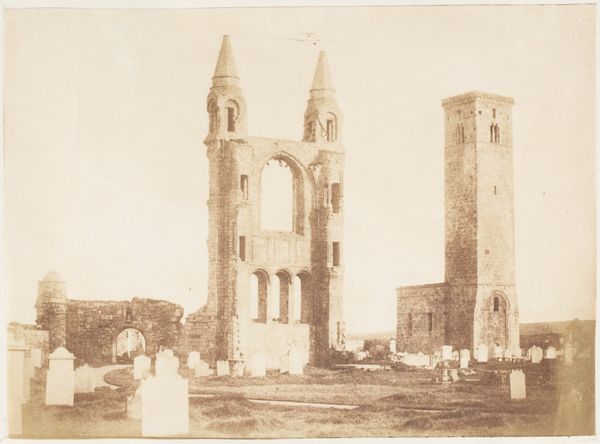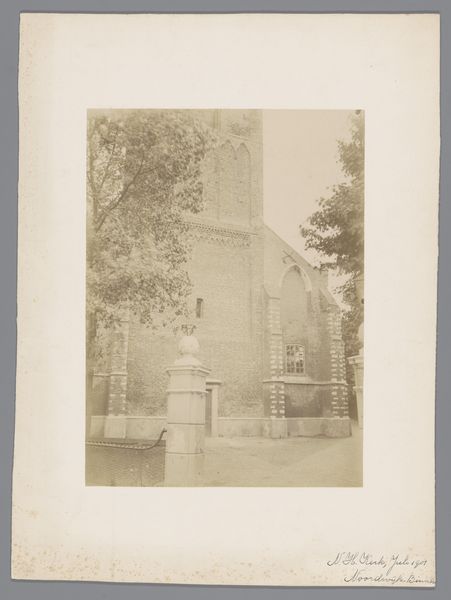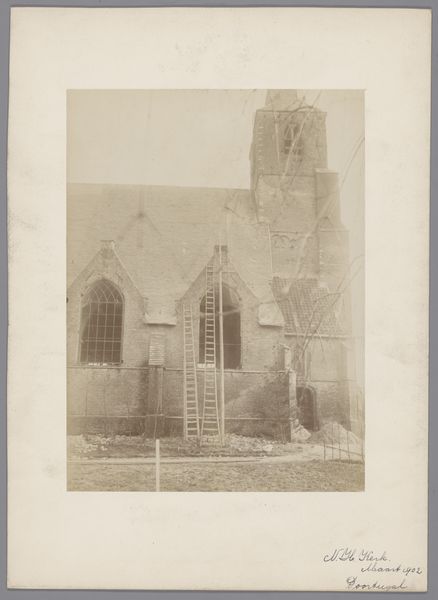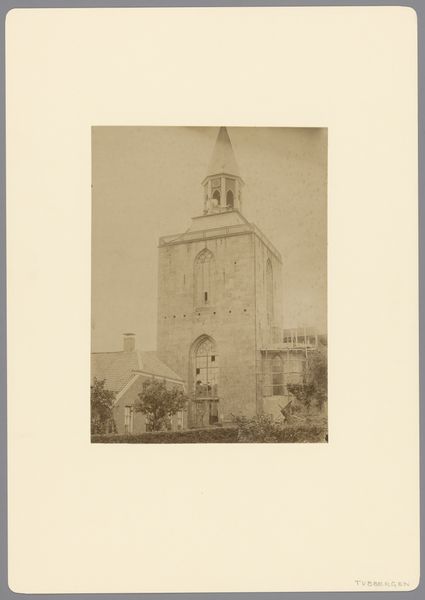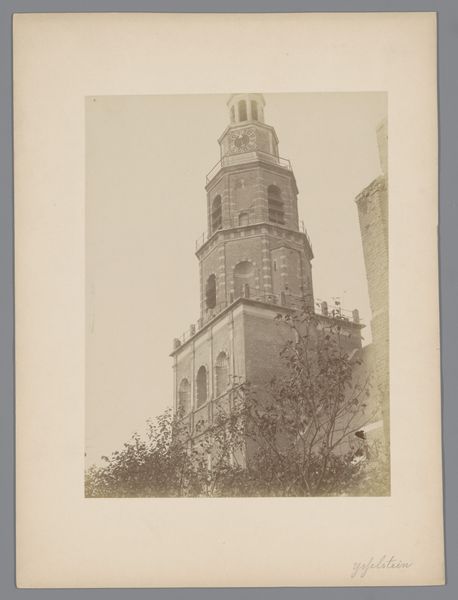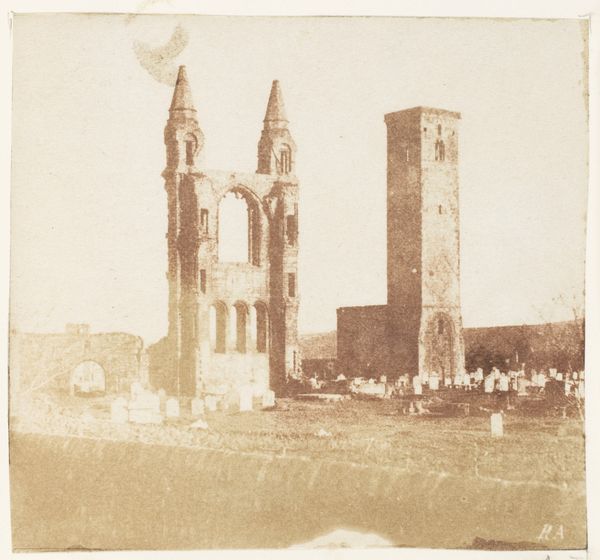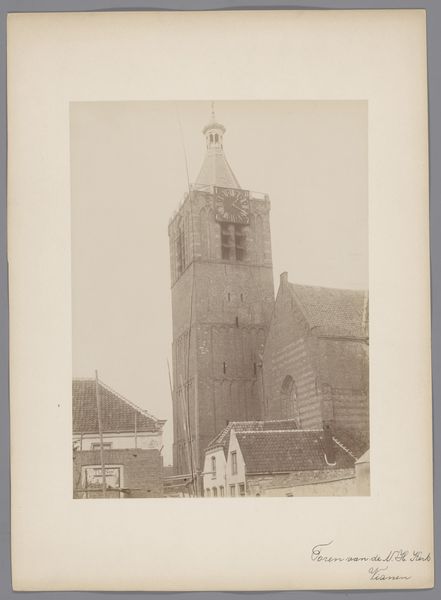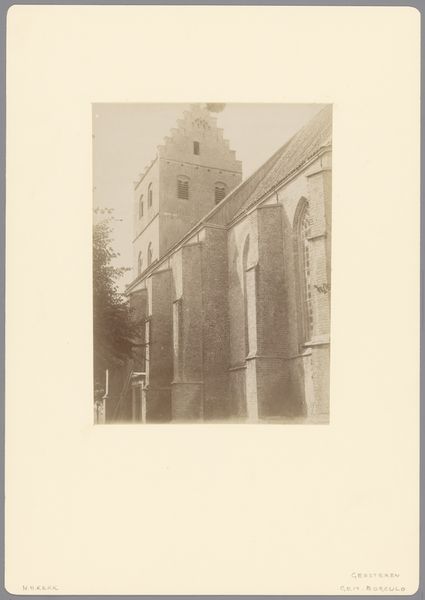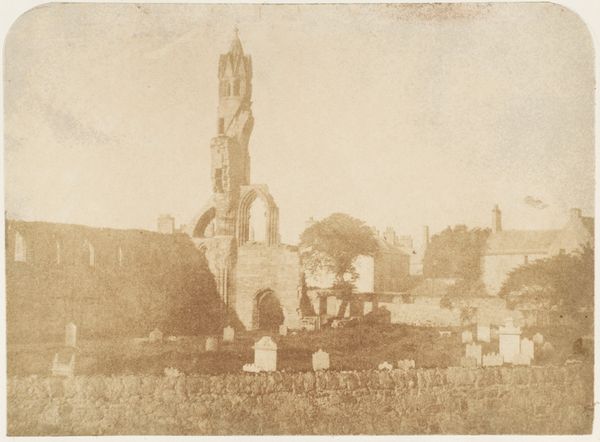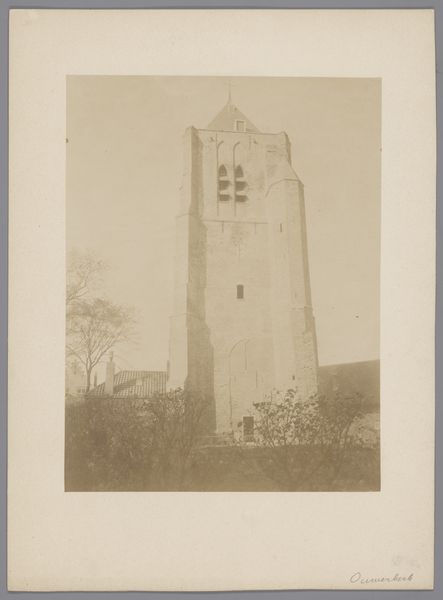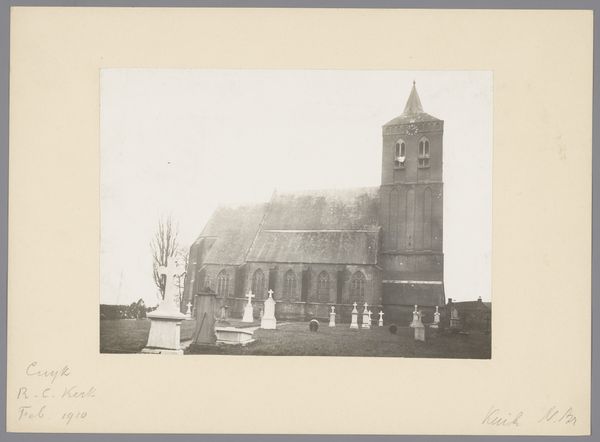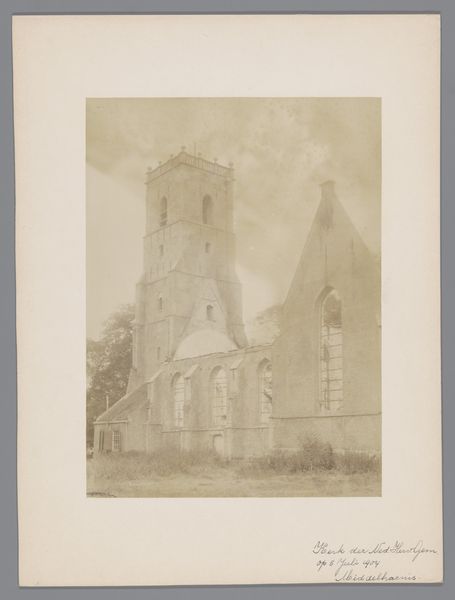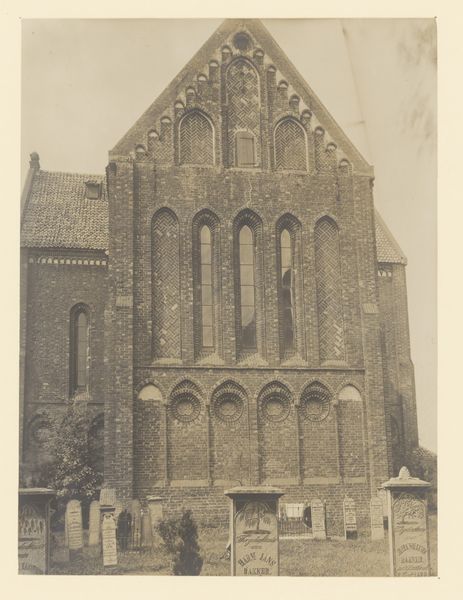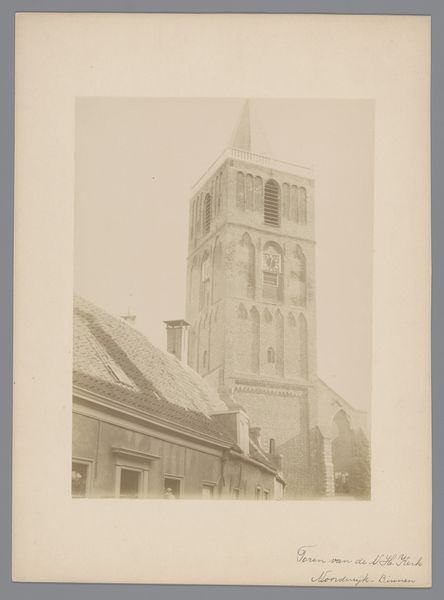
photography, site-specific, gelatin-silver-print
#
landscape
#
photography
#
romanticism
#
site-specific
#
gelatin-silver-print
#
cityscape
Copyright: Public Domain
This salted paper print, made in Scotland between 1843 and 1848 by Hill and Adamson, captures the ruins of St. Andrews Cathedral. More than just a historical record, it's a poignant reflection on time, religion, and national identity. In 19th-century Scotland, the ruined cathedral was a powerful symbol. Once a center of Catholic power, its decay mirrored the decline of religious authority following the Scottish Reformation. The photograph, with its soft focus and sepia tones, evokes a sense of romantic nostalgia. The crumbling stone and weathered tombs speak of mortality, while the imposing tower hints at enduring faith. Hill and Adamson were pioneers of photography, and their work was shaped by the artistic conventions of their time. They were influenced by the picturesque movement, which emphasized the beauty of decay and the sublime power of nature. To truly understand this image, we need to delve into Scotland’s complex religious and political history, exploring the interplay between faith, power, and national identity.
Comments
No comments
Be the first to comment and join the conversation on the ultimate creative platform.
